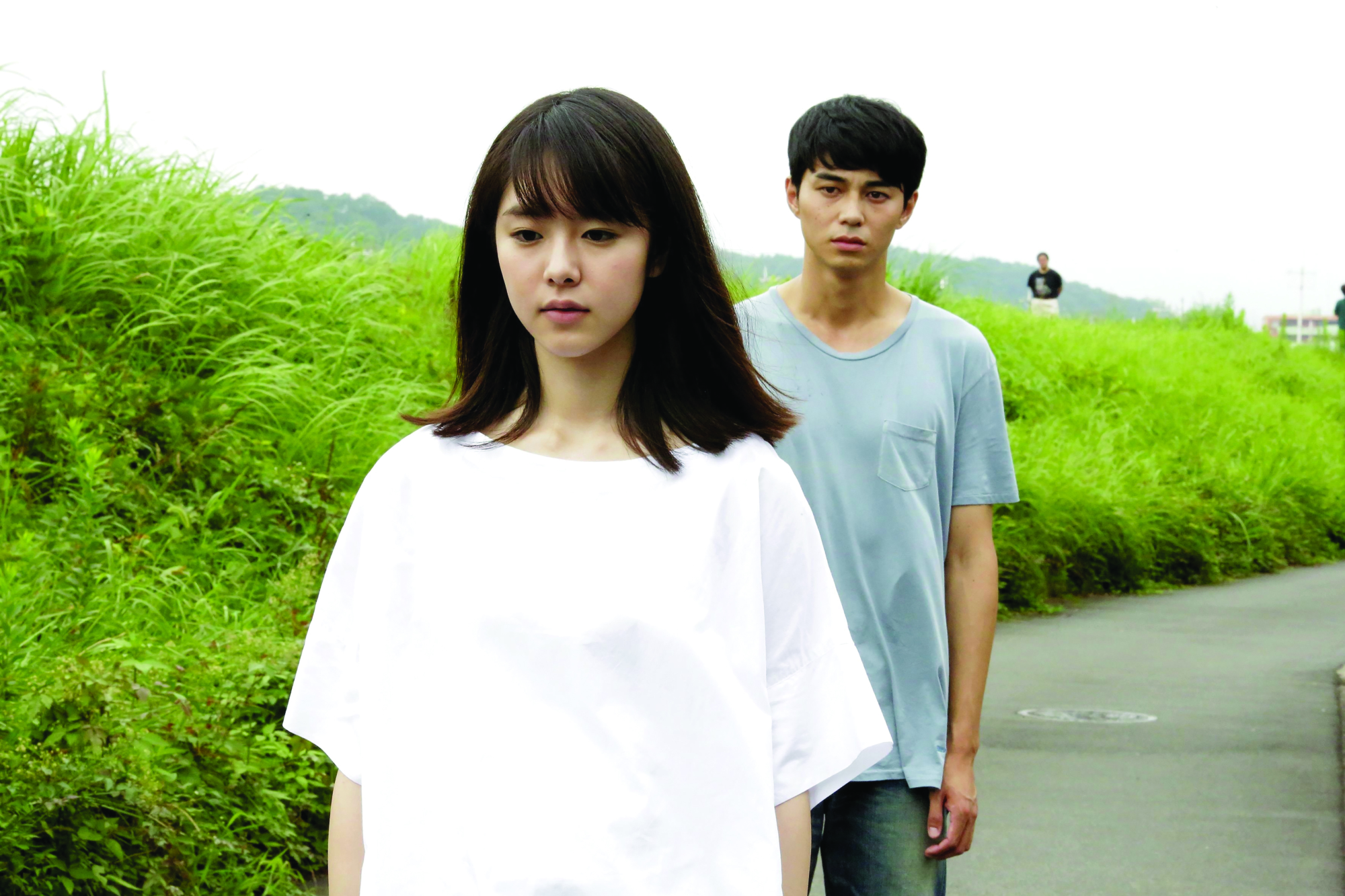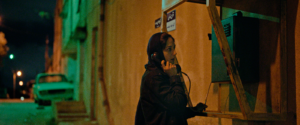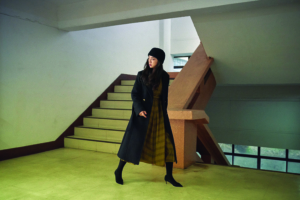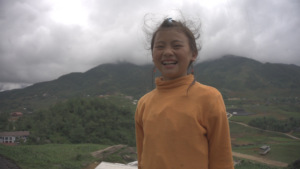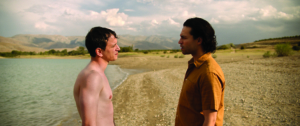Ryūsuke Hamaguchi loves rehearsal. ‘Rehearsals are the time when the creative process is actually happening,’ he says, in interview. ‘It’s in rehearsals that I make changes, and those changes end up improving the quality of work, improving the film itself.’[1]Ryūsuke Hamaguchi (via interpreter), interview with author, 12 September 2021.
In advance of any film production, the 43-year-old Japanese filmmaker gathers his ensemble and drills them through rehearsals in which they repeat their lines over and over. The hope is that this repetition will break through the initial emotional reading of a line. ‘I have a sense that when meaning is known, oftentimes it can lead to one-dimensional performances,’ Hamaguchi says. For his breakout film, Happy Hour (2015),[2]See Anthony Carew, ‘Candid Camera: Ryūsuke Hamaguchi’s Happy Hour’, Metro, no. 192, 2017, pp. 56–61. which won him acclaim and auteur status in spite – or perhaps because – of its five-hour running time, the filmmaker recruited a cast of non-professional actors. He then spent six months in rehearsal, exploring the entire relationship histories of its quartet of thirtysomething female friends: nurse Akari (Sachie Tanaka), housewife Sakurako (Hazuki Kikuchi), art space coordinator Fumi (Maiko Mihara) and divorcee Jun (Rira Kawamura). He’s so committed to the bit that even when making Wheel of Fortune and Fantasy (2021), which consists of three separate stories, he repeated this laborious rehearsal process thrice over.
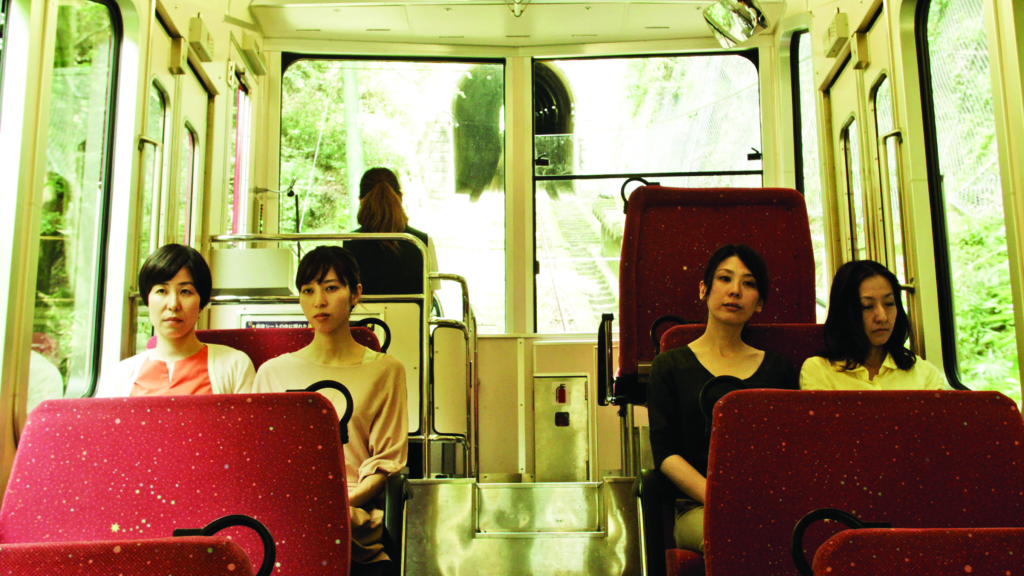
Hamaguchi so loves rehearsals that for long stretches of his latest film, Drive My Car (2021), he puts them front and centre. Kafuku (Hidetoshi Nishijima) is a theatre actor/director who is staging a production of Anton Chekhov’s Uncle Vanya two years after the death of his wife, Oto (Reika Kirishima). With echoes of Hamaguchi’s own process, Kafuku puts his cast through cold readings and endless line recitations. ‘I wouldn’t say Kafuku’s process that you see is entirely what I do, but there’s definitely a reflection happening,’ Hamaguchi admits.
Seeing Kafuku exhort his cast to do away with feeling is reminiscent of not only Drive My Car’s own filmmaker, but also a moment in Asako I & II (2018). In that film, Maya (Rio Yamashita) and Kosuke (Kōji Seto) have been set up as part of a double date with Asako (Erika Karata) and Ryōhei (Masahiro Higashide), the movie’s complicated central couple. The quartet are watching Maya on television performing in a production of Uncle Vanya. Unable to hold his tongue out of both earnestness and envy, Kosuke launches into a critique about her ‘mediocre’ performance. ‘When you play Chekhov,’ he lectures, ‘don’t over-interpret the lines.’
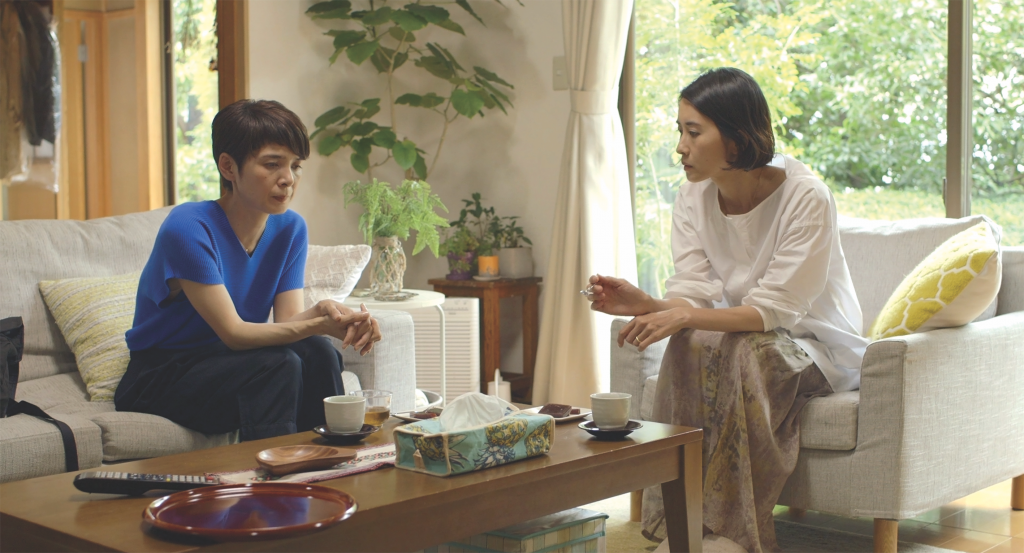
The rehearsal process provides the dramatic arc for Hamaguchi’s pre-fame 2012 feature Intimacies, made in collaboration with students he was teaching at Tokyo film school ENBU Seminar. It chronicles the preparations and performance of a theatre piece, also called Intimacies, essentially spending two hours on the development process, then two hours seeing the entire play performed on stage. The creative process brings up individual insecurities, finds tensions flaring and changes the offstage relationships between its makers, Hamaguchi drawn to the drama behind the drama.
The centrepiece of Happy Hour isn’t a rehearsal, but its close kin: a workshop. Hamaguchi had attended a group-improv acting workshop for six months in Kobe as an artist-in-residence, and took that as inspiration for Happy Hour, the single scene set at its workshop lasting for thirty-one minutes. The theme of the class – hosted by flaky, flirty conceptual artist Ukai (Shuhei Shibata) – is the English word ‘communication’, which doubles as the theme of the film itself. It’s one that also runs through Hamaguchi’s filmography.
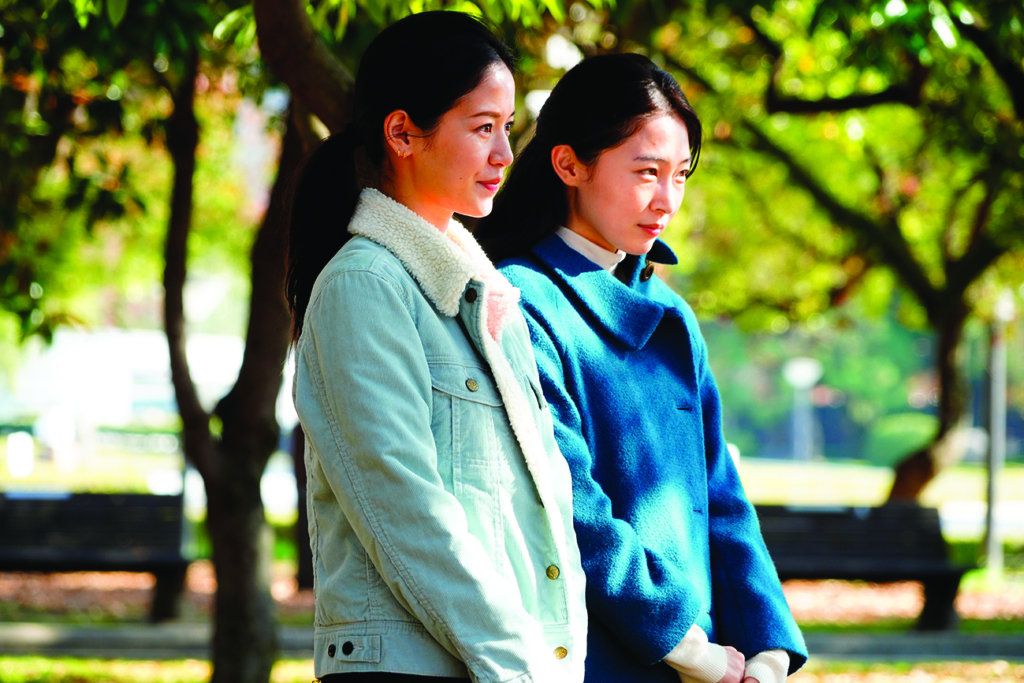
The director chronicles communication in the way people talk things over, tell stories, recount memories, confess secrets, air grievances, try to understand one another. Hamaguchi’s films are built around conversations. Wheel of Fortune and Fantasy opens with a ten-minute taxi ride where Tsugumi (Hyunri) recounts a date that was itself a ‘fifteen-hour conversation’. But while she details the flowering of new romance, what’s important is what her friend and interlocutor, Meiko (Kotone Furukawa), is not saying: that Tsugumi’s new love is Meiko’s own ex, Kazuaki (Ayumu Nakajima). Hamaguchi loves filling his films with things left unspoken – characters holding back, deliberately leaving things out or lying by omission – due to Japanese social mores, manners, fears or self-preservation. This is the troubled flip side of open communication: miscommunication, in which people are unwilling or unable to say what’s important or fail to connect or communicate clearly. In Drive My Car, Kafuku stages experimental theatre productions wherein a multicultural cast of actors deliver lines in their own language (Japanese, Korean, Mandarin, Cantonese, Tagalog, Malay, Indonesian, etc.); the effect is that, in the play within the film, Hamaguchi is presenting an ensemble who are all talking but not really communicating.
The director chronicles communication in the way people talk things over, tell stories, recount memories, confess secrets, air grievances, try to understand one another.
These multilingual productions are the outcome of Hamaguchi both dramatising an idea he’d had – again blurring the lines between Kafuku and himself – and sticking close to Kosuke’s Chekhov advice in Asako I & II. ‘What I was pursuing was how best to be able to create a situation where performance can be bettered,’ Hamaguchi says, ‘[whereas] the performance becomes more about sound, about voices, about the body and physicality.’ This ties it back to Happy Hour’s workshop, whose foggy notions about communication are often about bodies coming together, characters placing their ears on other participants’ stomachs or pressing their foreheads together to try to convey a thought physically: a form of communication ripe for miscommunication, but also a way of overcoming restrictive social norms.
While Hamaguchi asserts that he’s not out to pursue specific themes, he does admit that he’s ‘bound by [his] own thoughts and [his] own thinking’. He knows that his works are stitched together, sometimes deliberately so. ‘There are things that I always feel that I wasn’t quite developed or mature enough to be able to execute properly in the way that I wanted to [on previous films],’ he explains, ‘so I often do find myself grappling with the same or a similar theme, and then rechallenging these things. And that actually motivates me.’ What this entails is a repetition of certain themes, ideas, motifs or dramatic situations. His filmography is joined by lines that can be drawn from documentary to fiction, from films whose screenplays he birthed to those adapted from other sources (Asako I & II, from a novel by Tomoka Shibasaki; Drive My Car, from a short story by Haruki Murakami) to a screenplay he wrote for another filmmaker that was based, loosely, on true events (2020’s Wife of a Spy, directed by Kiyoshi Kurosawa, Hamaguchi’s former film school professor[3]See Jean Noh, ‘Bong Joon Ho, Ryusuke Hamaguchi Talk Influences, Casting and Shooting in Cars’, Screen Daily, 8 October 2021, <https://www.screendaily.com/news/bong-joon-ho-ryusuke-hamaguchi-talk-influences-casting-and-shooting-in-cars/5164078.article>, accessed 21 November 2021.).
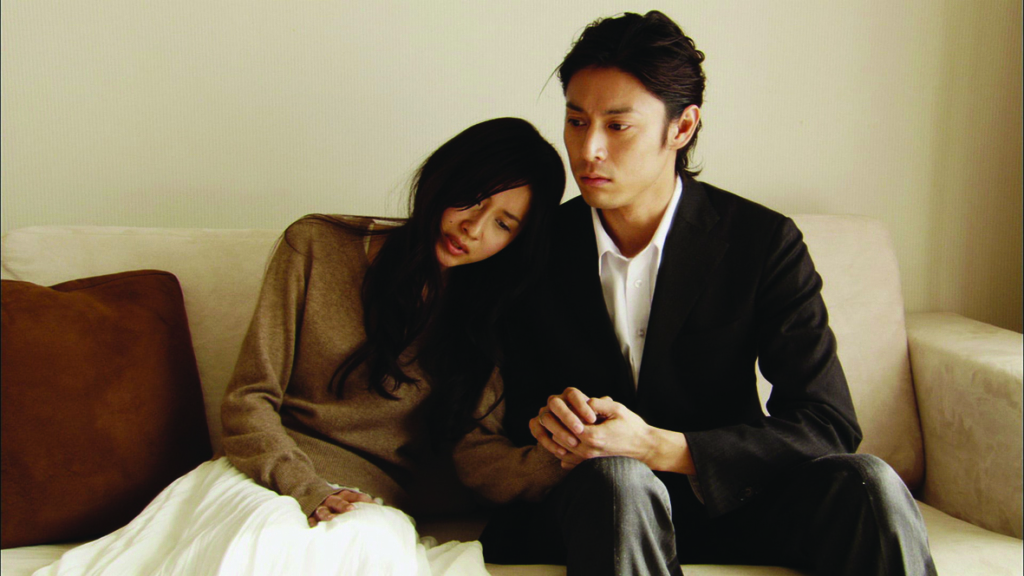
His love of theatre and rehearsals betrays a fondness for intertextuality; in Wife of a Spy, that turns towards cinema. The film is unlike the work of either Hamaguchi or Kurosawa, staging a Hitchcockian World War II matinee filled with sumptuous period wardrobe and grand romance. It depicts a cosmopolitan couple – silk merchant Yūsaku (Issey Takahashi) and his glamorous wife, Satoko (Yū Aoi) – at odds with Imperial Japan, embodied in the form of Satoko’s former childhood friend–turned–fascist officer Taiji (Higashide). Yūsaku is an amateur filmmaker who gets his employees to help in the making of a drama that we see on screen, its silent black-and-white contrapuntal to Wife of a Spy’s rich colours. The contents of film canisters become central to the intrigue when Yūsaku heads to Manchuria – ostensibly to make his film but, in reality, in service of international espionage, chronicling Japan’s illegal use of biological weapons. This covert footage, consisting of ghostly medical figures on grainy celluloid, offers an obvious contrast to the official propaganda shown in an upbeat, old-timey newsreel that valorises ‘our brave Imperial citizens resisting Allied forces in Indochina’ (this comes on before a screening of Priest of Darkness, a real-life 1936 film by Sadao Yamanaka whose opening credits we see roll on screen[4]Yūsaku also at one point says to his wife, ‘[Kenji] Mizoguchi’s new film must be a masterpiece,’ making for two open references in Wife of a Spy to classic Japanese cinema.).
Guarded moments
The front-and-centre placement of Chekhov in Asako I & II and Drive My Car allows the playwright, and his words, to echo and even speak aloud the themes that Hamaguchi is grappling with (‘The truth, whatever it is, is not as frightening as uncertainty’ is a line that lingers in particular). In the latter film, Kafuku says to his lead actor, infamous bad-boy heart-throb Takatsuki (Masaki Okada), ‘When you say [Chekhov’s] lines, they drag out the real you.’ That points at the work of both Hamaguchi and Kafuku, real and fictional directors each using old theatre to get at unspoken truths. The strange relationship between Kafuku and Takatsuki is filled with the unspoken, along with another of Hamaguchi’s favourite explored ideas: sustained lies and mutual fictions. Takatsuki both worked on a TV drama with Kafuku’s late wife – a writer who often collaborated with her husband – and was having an affair with her. After she suddenly dies of a cerebral haemorrhage early in the film, and these two men see each other at her funeral, Kafuku casts Takatsuki (who is fresh off a tabloid sex scandal) in his production of Uncle Vanya. He wants to keep him close but leave the affair unspoken, actively avoiding the actor when Takatsuki wants a sit-down conversation. Eventually, they meet in a bar, and Kafuku says, calmly: ‘Here’s what you think: “He and I share the same pain, because we loved the same woman.”’ This breaking of the ice eventually leads to a long conversation in which they talk about the oft-disturbing stories that Kafuku’s wife shared with each of them – spurred on, always, by sex.
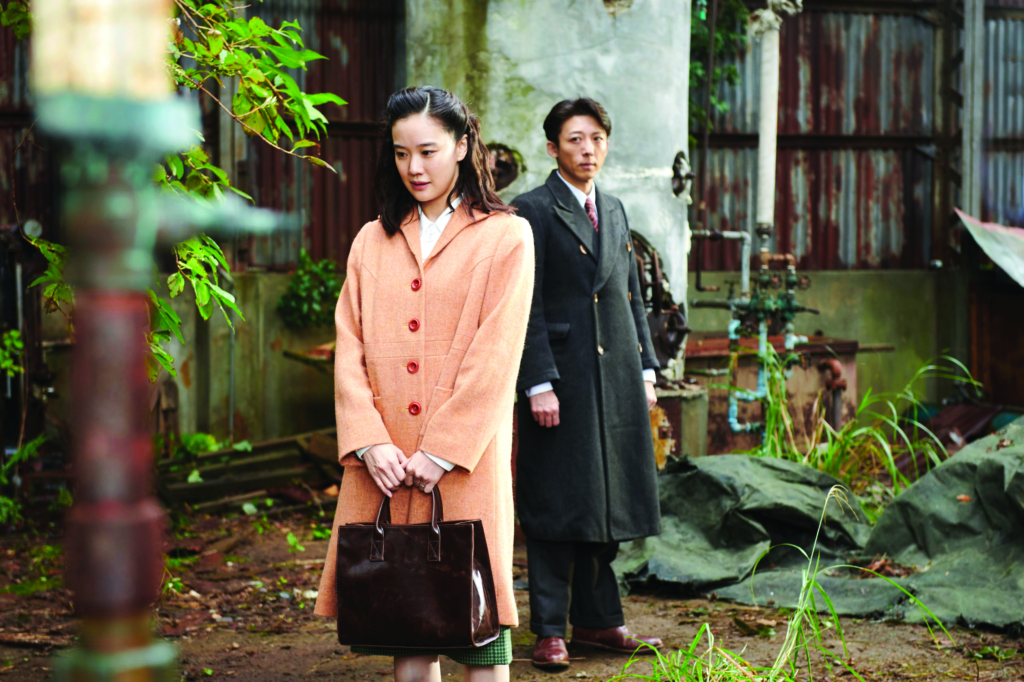
In Happy Hour, as we follow the film’s central friendship group over the years, there are currents of lies, fiction and the unspoken throughout. Jun is going through divorce proceedings, but hasn’t told two of the friends. Akari is herself a divorcee, but wishes her husband had never confessed the infidelity that brought their break-up about (‘Be a man and keep it a secret till he dies!’). In court, Jun’s husband professes his undying devotion to her, a grand public pledge whose sincerity we doubt. Fumi’s husband seems like he’s having an affair with a young author, but maintains that he’s not. And when Sakurako’s teenage son reveals that he has accidentally impregnated a classmate, the boy’s father is mad: he should have gotten his schoolfriends to pitch in for an abortion and kept it secret from his family, he says; now that he’s told his parents, they’ll have to make a formal, shameful apology to the girl’s family.
Likewise, Hamaguchi’s early, John Cassavetes–inspired feature Passion (2008), made while he was attending film school,[5]Prior to this, Hamaguchi made two rarely seen features, Like Nothing Happened (2003) and Solaris (2007), the latter an adaptation of Stanisław Lem’s famous novel. He’s also directed the feature The Depths (2010) and mid-length works Touching the Skin of Eeriness (2013) and Heaven Is Still Far Away (2016). is about the long-held secrets that bubble up when a young couple, Kaho (Aoba Kawai) and Tomoya (Ryuta Okamoto), announce that they are getting married, prompting confessions of past affairs and unrequited passions, as well as the disapproval of a potential mother-in-law. In one memorable scene, Tomoya exhorts an ex-lover and romantic rival to join him in speaking with utter candour, summoning a mythical Mexican ‘fountain of truth’. He wants them to be ‘real’, but even in moments of bitter, cathartic truth-telling, it feels like a kind of performance. ‘People are performing all the time,’ Hamaguchi has offered, elsewhere. ‘If somebody wants to be or have something, the fastest way to make it happen is usually to lie. A lie can’t last, though […] It can only survive as fiction.’[6]Ryūsuke Hamaguchi, quoted in David Ehrlich, ‘Drive My Car and Wheel of Fortune and Fantasy Filmmaker Ryusuke Hamaguchi Explores the Upside of Getting Lost in Translation’, IndieWire, 13 October 2021, <https://www.indiewire.com/2021/10/ryusuke-hamaguchi-interview-drive-my-car-wheel-of-fortune-and-fantasy-1234669831/>, accessed 21 November 2021.
The three otherwise-unrelated stories of Wheel of Fortune and Fantasy are united by the fact that each is about mutual fictions. In the final section, ‘Once Again’, set in an alternate 2018 in which a virus has wiped out the internet, Natsuko (Fusako Urabe) returns to her home town for a school reunion and bumps into Aya (Kawai). In a case of mutual mistaken identity, they each take the other for an old classmate they once knew; and, even when they later twig to their error, keep playing along with it, going deep into a conversation full of confession (confession always being the dramatic counterweight to sustained lies). After finally revealing that they’ve misidentified each other, they then openly roleplay as the person each was mistaken for. In the preceding story, ‘Door Wide Open’, married Nao (Katsuki Mori) is having an affair with fuckboi Sasaki (Shouma Kai); the latter concocts a revenge plot wherein Nao will try and seduce the professor (Kiyohiko Shibukawa) who failed him in order to create a scandal. And in the aforementioned opening tale, ‘Magic (or Something Less Assuring)’, Meiko and Kazuaki choose not to inform Tsugumi about their previous relationship. This segment of the film and Asako I & II each features a moment in which a couple and a friend sit at a table, two of the three parties possessing knowledge of a romantic history they don’t disclose.
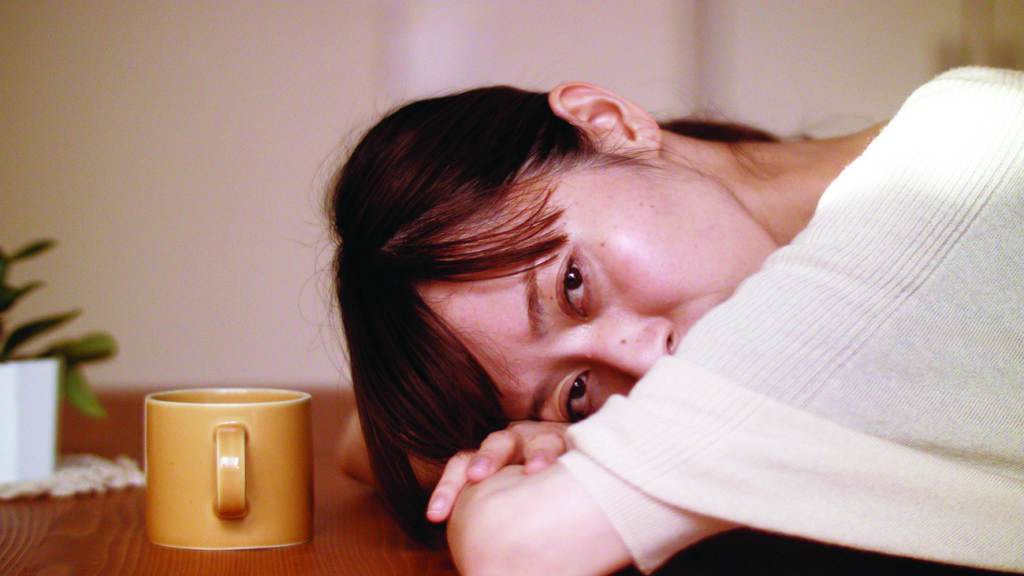
The past is never dead
Another favourite subject of Hamaguchi’s is the spectre of former relationships: it turns up in two of the three stories of Wheel of Fortune and Fantasy, creates a wartime love triangle in Wife of a Spy, undermines a planned marriage in Passion and is the narrative engine of Asako I & II. The last of these opens with Asako meeting handsome Baku (Higashide, in a dual role), a shaggy-haired hipster who’s flaky and avoidant, prone to wandering off. ‘I’ll come back to you, Asako, I promise,’ he says, before disappearing without a trace. Two years later, Asako has moved from Osaka to Tokyo, where she meets Ryōhei, the spitting image of her former flame. Spooked by the coincidence, Asako literally runs away from him, but this only encourages Ryōhei to pursue her. Initially, she rebuffs his advances, tries to break off their relationship, withholds herself. She does eventually dump him outright, only for the couple to be fatefully reunited in the wake of the 2011 Tōhoku earthquake and tsunami (which is a recurring event in Hamaguchi’s filmography: four feature-length documentaries, 2012’s The Sound of Waves and 2013’s Voices from the Waves: Shinchimachi, Voices from the Waves: Kesennuma and Storytellers, find him listening to stories told by survivors of the tsunami; Happy Hour’s conceptual artist character makes work inspired by volunteering in Tōhoku in the wake of the tragedy; and Asako and Ryōhei, in Asako I & II, end up doing the same[7]Intimacies is set against the backdrop of a different real-life event: increased hostilities on the Korean Peninsula in early 2011.). But the spectre of Baku – the ‘one that got away’ – lingers, causing Asako to never wholly commit to her new relationship even as it deepens, this ex having a deleterious effect in absentia. Baku eventually returns and, in a fantastical moment, whisks Asako away, our titular heroine whimsically throwing away her life in pursuit of an old infatuation, a lost love for which she never had closure. When they alight from their lives, they drive north: Hokkaido their intended, but eventually abandoned, destination.
Drive My Car also heads north towards Hokkaidō in its final act, the snowy landscape allowing for climactic confessions of painful pasts. As its title suggests, this film is full of scenes set in cars: Kafuku, when arriving in Hiroshima – a city literally rebuilt on the painful past – in order to stage his production of Uncle Vanya, is assigned a local driver, Misaki (Tōko Miura), to ferry him from his guesthouse to the theatre. His preferred method for memorising the dialogue of a play is to drive around, listening to a recording of the lines voiced by his late wife. The taciturn Misaki is invited into this automotive ritual; and, eventually, over the course of their drives, the pair grow closer, culminating in a journey across Japan to return to her childhood home. ‘Something about the inside of a car makes conversation really easy to start,’ Hamaguchi muses. ‘It’s a strange and mysterious space that’s not quite settled because it moves so much – it’s public and private at the same time in a way that defies any clear definition.’ The conversations that emerge in vehicles, he believes, ‘arise from the urge to stabilize that space’.[8]Hamaguchi, quoted in Ehrlich, op. cit.
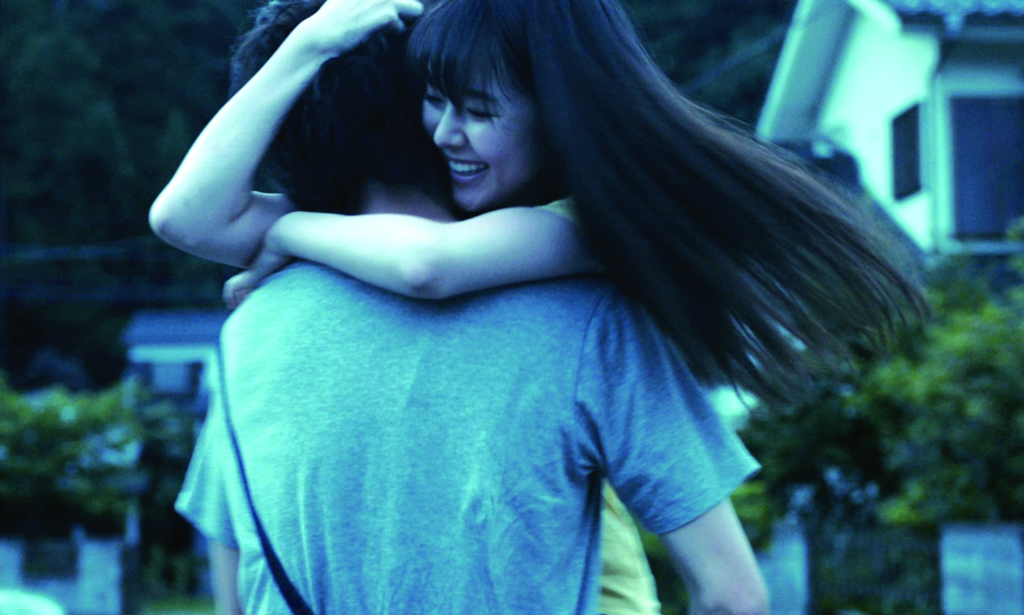
Signifying traits
The most striking qualities of Hamaguchi’s fictional work are purely durational – his films littered with long takes, long scenes and long running times (Happy Hour is 317 minutes; Intimacies, 255; Drive My Car, 179). It’s a technique that he’s explored from the start: Passion depicts two characters conversing across an unbroken eleven-minute shot that slowly pans down from a giant smokestack; Intimacies includes a single seventeen-minute shot in which the play’s writer, Ryo (Ryo Sato), and director, Reiko (Rei Hirano), walk and talk on a bridge, silhouetted in half-light.
Another favourite device is to show characters in close-up, looking into the lens of the camera: a framing that situates viewers in the middle of a conversation, or makes it feel as if characters are speaking directly to the audience. In Happy Hour, as the four friends bond at a weekend retreat, they ‘reintroduce’ themselves to one another into the lens of the camera, bowing to the viewer in formal greeting. And in Intimacies, as Ryo ‘interviews’ cast members, in the hope that their stories and confessions will help the production, each party looks into the lens – this deep-development part of the rehearsal process reminiscent of Hamaguchi’s own methods.
A favourite device is to show characters in close-up, looking into the lens of the camera: a framing that situates viewers in the middle of a conversation, or makes it feel as if characters are speaking directly to the audience.
So many of these predilections converge in a striking scene from Drive My Car where Kafuku and Takatsuki talk about their shared sexual histories with Kafuku’s wife, the stories she told them, the pursuit of truth found in storytelling and acting. It feels like a collision between these two souls, but also a piece of theatre, in which each character is acting out a role for the other. It’s set, of course, in a car, and it lasts for sixteen increasingly intense minutes. It’s a long conversation that Hamaguchi would have, of course, rehearsed over and over, pursuing buried feelings, hard truths, painful histories. In a telling moment, Takatsuki speaks about truth, about knowing someone, about the responsibility that comes with connecting with another person. The camera slowly, almost imperceptibly presses in, until the character is looking into the lens, his eyes misting up. ‘If you really want to look at someone,’ he says, ‘then your only option is to look at yourself, squarely and deeply.’
Endnotes
| 1 | Ryūsuke Hamaguchi (via interpreter), interview with author, 12 September 2021. |
|---|---|
| 2 | See Anthony Carew, ‘Candid Camera: Ryūsuke Hamaguchi’s Happy Hour’, Metro, no. 192, 2017, pp. 56–61. |
| 3 | See Jean Noh, ‘Bong Joon Ho, Ryusuke Hamaguchi Talk Influences, Casting and Shooting in Cars’, Screen Daily, 8 October 2021, <https://www.screendaily.com/news/bong-joon-ho-ryusuke-hamaguchi-talk-influences-casting-and-shooting-in-cars/5164078.article>, accessed 21 November 2021. |
| 4 | Yūsaku also at one point says to his wife, ‘[Kenji] Mizoguchi’s new film must be a masterpiece,’ making for two open references in Wife of a Spy to classic Japanese cinema. |
| 5 | Prior to this, Hamaguchi made two rarely seen features, Like Nothing Happened (2003) and Solaris (2007), the latter an adaptation of Stanisław Lem’s famous novel. He’s also directed the feature The Depths (2010) and mid-length works Touching the Skin of Eeriness (2013) and Heaven Is Still Far Away (2016). |
| 6 | Ryūsuke Hamaguchi, quoted in David Ehrlich, ‘Drive My Car and Wheel of Fortune and Fantasy Filmmaker Ryusuke Hamaguchi Explores the Upside of Getting Lost in Translation’, IndieWire, 13 October 2021, <https://www.indiewire.com/2021/10/ryusuke-hamaguchi-interview-drive-my-car-wheel-of-fortune-and-fantasy-1234669831/>, accessed 21 November 2021. |
| 7 | Intimacies is set against the backdrop of a different real-life event: increased hostilities on the Korean Peninsula in early 2011. |
| 8 | Hamaguchi, quoted in Ehrlich, op. cit. |
